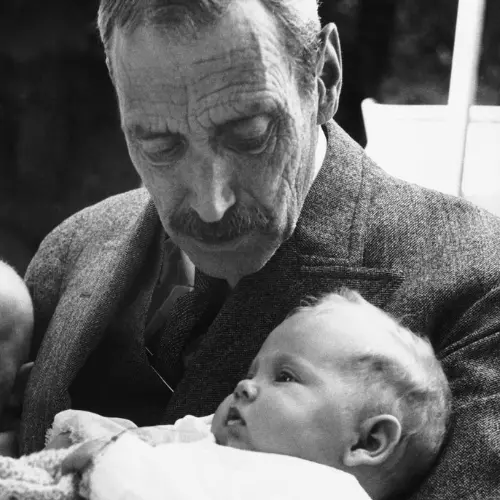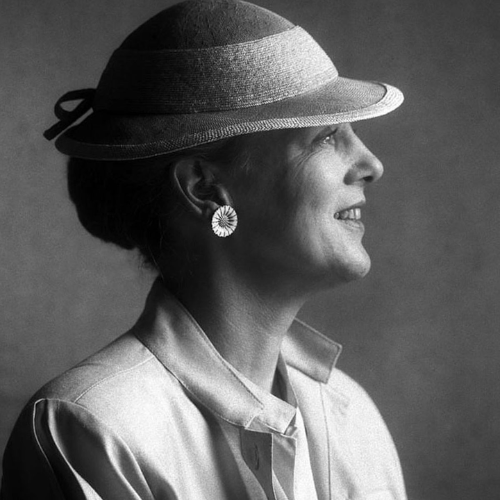
Denmark, a nation steeped in rich history and cultural heritage, has been blessed with a monarch whose reign has been synonymous with grace, resilience, and a deep commitment to her people. Queen Margrethe II, the longest-reigning current monarch in Europe, has not only upheld the traditions of the Danish monarchy but has also played a crucial role in modernising the role of the royal family in a changing world. This blog will delve into the life and reign of Queen Margrethe II, exploring her upbringing, her contributions to Danish society, and the enduring impact of her monarchy.
Early Life and Education:
Born on April 16, 1940, Margrethe Alexandrine Þórhildur Ingrid, the eldest daughter of King Frederick IX and Queen Ingrid, holds a unique place in Danish history. Her arrival marked a historic moment, as she became the first Danish princess born in nearly six centuries. Raised in the regal embrace of Amalienborg Palace, Copenhagen, Margrethe embarked on an exceptional educational journey, attending private schools and later studying at the University of Copenhagen.
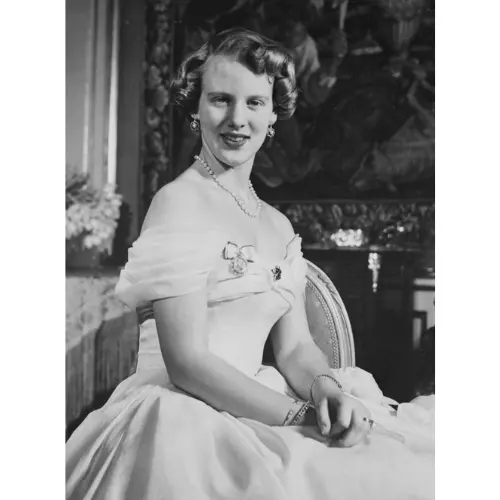

Her intellectual pursuits reflected a profound curiosity, particularly in the realms of arts, history, and languages. Margrethe delved into political science, archaeology, and prehistoric anthropology during her academic years, establishing a foundation for the broad knowledge and cultural appreciation that would define her future reign. Notably, she stands as one of Europe's best-educated monarchs, having graduated from various prestigious institutions and even contributing to the Danish Women's Flying Corps and the Women's Auxiliary Air Force during World War II.
Beyond her regal duties, Margrethe's passions extend to archeology and art, showcasing her artistic talents through illustrations for "Lord of the Rings" and designing costumes and scenery for a TV adaptation of Hans Christian Andersen's "The Shepherdess and the Chimney Sweep." Her multifaceted pursuits underscore her role as a monarch with a rich blend of intellectual depth and artistic flair.
Marriage and Family:
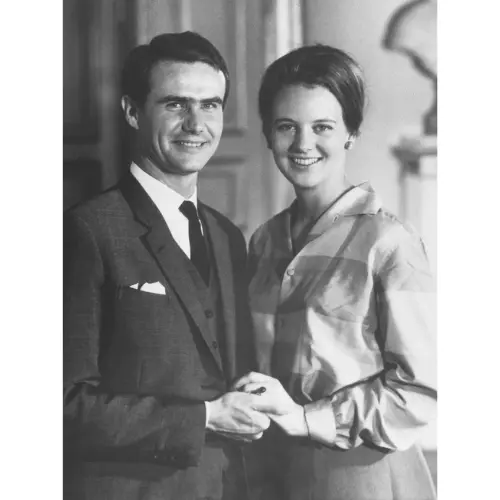
In 1967, Crown Princess Margrethe of Denmark exchanged vows with Henri de Laborde de Monpezat, a distinguished French diplomat. Their union was a cross-cultural celebration, seamlessly blending Danish and French traditions, epitomising the cosmopolitan essence of the royal couple. From this union blossomed two sons, Frederik and Joachim, both destined to leave indelible marks on the future of the Danish monarchy.
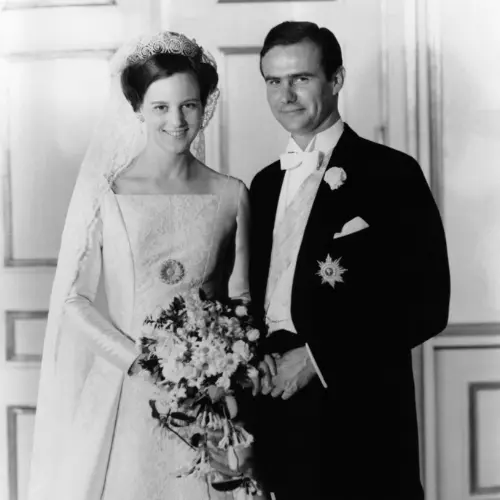
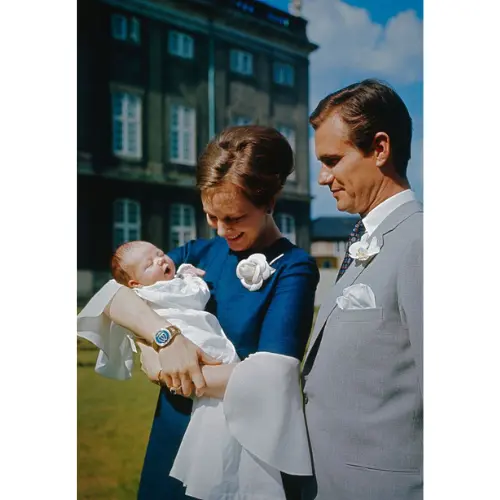
The pinnacle of their shared journey arrived in 1972 when Margrethe ascended the throne, and Henri became her prince consort. His role marked a historic first as the inaugural male consort to a Danish monarch. Despite his significant contributions and a deep connection with the Danish people, Prince Henrik publicly expressed disappointment at never being bestowed the title of king.
Tragedy struck in 2018 with Prince Henrik's passing, casting a somber shadow over Queen Margrethe's life. The loss of her devoted companion of over five decades unveiled a vulnerable aspect of the queen, yet it also showcased her remarkable strength and resilience in the face of personal adversity.
Beyond his royal duties, Prince Henrik was an accomplished winemaker, cultivating his wine at his French estate. Additionally, he delved into the world of poetry, leaving behind a legacy of creative expression. His retirement in 2016 marked the conclusion of a chapter in Danish royalty, and his passing on February 13, 2018, at Fredensborg Palace, after a brief illness, left an enduring void in the hearts of the Danish people.
Jewelry:
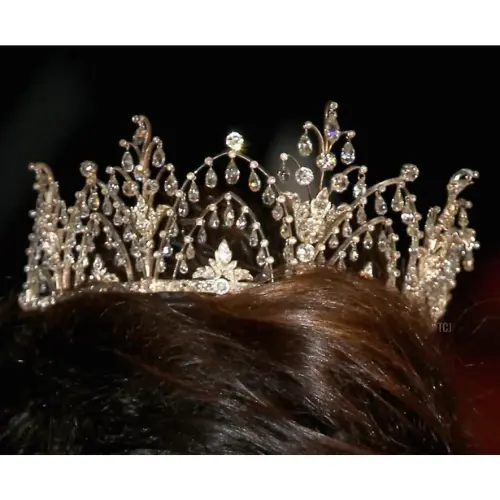
Princess Margrethe of Denmark was 17 years old when Queen Elizabeth II and Prince Philip visited Denmark in 1957. Despite being considered old enough to participate in the state visit, she was not yet old enough to wear a tiara, a traditional ornament worn by royal women. This changed a year later when she turned 18 and received her first tiara, the Alexandrine Diamond Drop Tiara, as a gift from her grandmother, Queen Alexandrine.

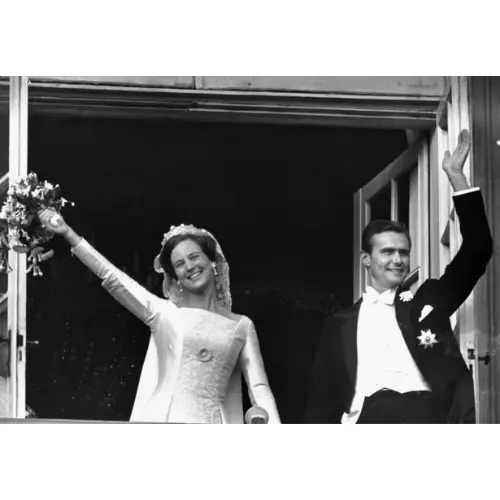
Queen Margrethe's wedding in 1967 was a beautiful and poignant occasion, not just for the union of the young couple but also for the subtle nods to her late maternal grandmother, Queen Ingrid. Through her carefully chosen jewelry, Margrethe wove a thread of family history and affection into the ceremony. One particularly significant piece was the Khedive of Egypt Tiara, used to secure her lace veil. This exquisite diamond tiara, crafted by Cartier, was originally gifted to Queen Ingrid's mother, Princess Margaret of Connaught, by the Khedive of Egypt on the occasion of her 1905 wedding.

The Ruby Horseshoe Brooch, nestled at the end of this documentary on Queen Margrethe, is more than just a beautiful ornament; it's a tangible symbol of destiny, resilience, and a daughter's journey to the throne. Gifted by King Frederik IX on June 1953, the day the Danish parliament declared the young Margrethe his heir, it embodies a pivotal moment in the life of both queen and country.
Ascension to the Throne:
In a pivotal moment in Danish history, Queen Margrethe II ascended to the throne on January 15, 1972, following the passing of her father, King Frederick IX. This transition marked a significant milestone as Margrethe became the first female Danish sovereign under the newly enacted Act of Succession. At the age of 31, she took on the responsibility of leading the nation.
Proclaimed Queen on the balcony of Christiansborg Palace by Prime Minister Jens Otto Krag, Queen Margrethe II embraced her role with a unique title, retaining only the designation "By the Grace of God, Queen of Denmark." The monarch relinquished other former titles in a symbolic gesture.
Her chosen motto, "God's help, the love of The People, Denmark's strength," reflected her commitment to divine guidance, the support of her people, and the resilience of the Danish nation. In a nod to Danish history, she adopted the regnal number II, paying homage to a 14th-century Danish regent, Margrethe, who was known as Queen Margrethe despite never being crowned.
This historic moment not only marked the beginning of Queen Margrethe II's reign but also signaled a new era for Denmark under the leadership of its first female monarch.
Reign and Modernization:
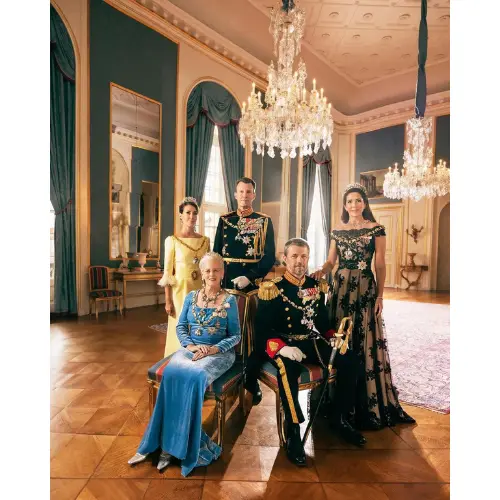
Queen Margrethe II's reign has been characterised by a delicate balance between preserving tradition and adapting to the changing times. She has actively engaged in modernising the monarchy, making it more accessible and relevant to the Danish people. The queen's approachability and down-to-earth demeanour have endeared her to the public, fostering a sense of connection between the royal family and the citizens of Denmark.
Constitutional Role:
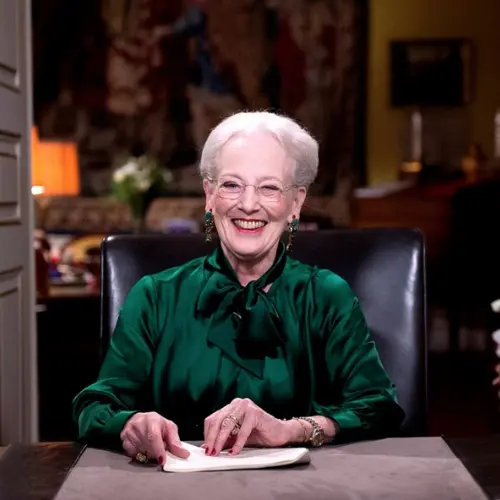
While Denmark is a constitutional monarchy, with limited powers vested in the monarch, Queen Margrethe II has played a vital role in upholding the traditions of the Danish monarchy. Her ceremonial duties include the opening of the Danish Parliament, the State Council, and the presentation of awards and honours. Despite her limited political influence, the queen has been a unifying figure, symbolising continuity and stability in a rapidly changing world.
During times of political uncertainty, Queen Margrethe has often been a voice of reason and unity. Her ability to navigate the complexities of Danish politics while remaining neutral has earned her the respect of both politicians and citizens alike. The queen's speeches, delivered on New Year's Eve and other significant occasions, often convey a message of hope, solidarity, and shared values.
International Relations:
Queen Margrethe II has been an active participant in international diplomacy, strengthening Denmark's ties with other nations. Her state visits and meetings with foreign leaders have contributed to the country's diplomatic efforts and cultural exchanges. The queen's ability to bridge cultural gaps and foster goodwill has enhanced Denmark's global standing.
Legacy and Cultural Impact:
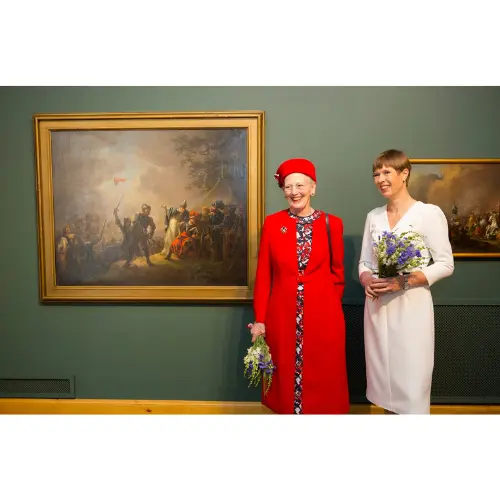
As the longest-reigning current monarch in Europe, Queen Margrethe II has left an indelible mark on Danish society. Her reign has witnessed a transformation in the perception of the monarchy, with the queen embracing a more modern and inclusive approach. The royal family, under her guidance, has become more relatable, engaging with the public through social media and public events.
Queen Margrethe's cultural impact extends beyond the confines of the monarchy. Her artistic endeavours, including paintings, illustrations, and set designs, have earned her recognition as a multifaceted and accomplished artist. The queen's creative pursuits have not only enriched Denmark's cultural landscape but have also inspired future generations to explore their artistic talents. One notable aspect of Queen Margrethe's reign is her commitment to cultural and artistic pursuits. A talented artist herself, she has contributed to the design of costumes for various theatrical productions and even illustrated several books. Her passion for the arts has helped elevate Denmark's cultural profile on the global stage.
Royal Residences and Traditions:
The Danish royal family is known for its rich tapestry of traditions and ceremonies, and Queen Margrethe II has worked diligently to preserve and honor these customs. From the grandeur of Amalienborg Palace to the historic significance of Christiansborg Palace, the queen's association with these royal residences serves as a tangible link to Denmark's regal past.
In addition to maintaining the traditional aspects of the monarchy, Queen Margrethe has also introduced modern elements, making the royal family more accessible to the public. The annual summer cruise on the royal yacht, Dannebrog, and events like the Queen's Birthday celebrations provide opportunities for the Danish people to connect with their monarch in a more informal setting.
Abdication:
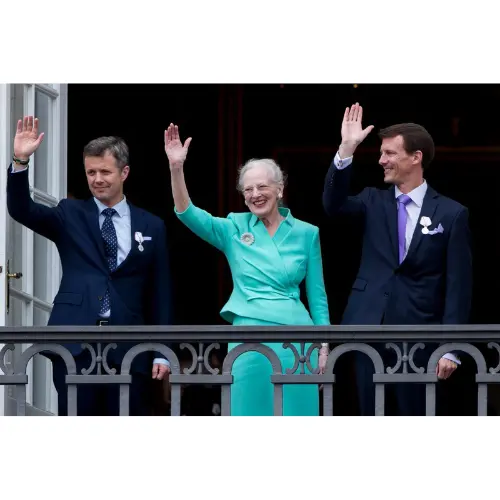
In a surprising turn of events, Queen Margrethe II of Denmark announced her impending abdication during her New Year's Eve address on December 31, 2023. Scheduled to step down on January 14, 2024, after 52 years on the throne, she will be succeeded by her elder son, Crown Prince Frederik, who will ascend as King Frederik X.
Margrethe II, Europe's longest-reigning monarch and the world's only queen regnant since the passing of Elizabeth II in 2022, cited health reasons for her decision. The Queen revealed that a back surgery in February 2023 prompted a reassessment of her ability to fulfill royal duties, leading to the conclusion that it was time to pass the responsibility to the next generation.The announcement marks the first voluntary abdication by a Danish monarch in nearly 900 years, breaking with a longstanding tradition of lifelong service. While the Act of Succession acknowledges the possibility of abdication, it is a departure from the historical norm.
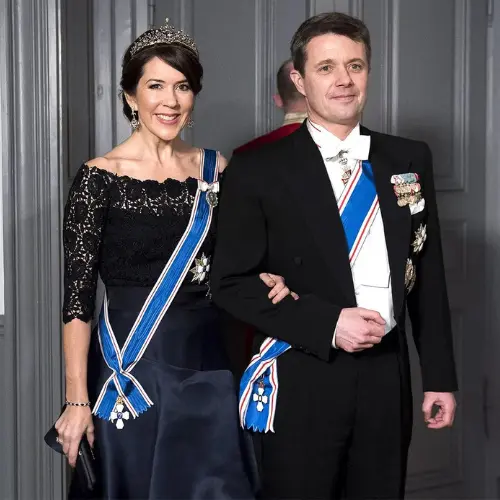
Expressing gratitude for the public's unwavering support, collaborative efforts with governments, and the confidence vested by parliament, Queen Margrethe II hopes for the same trust and devotion to be extended to the new king and queen. The abdication ceremony is set to take place at Christiansborg Palace, followed by the proclamation of the new king by Prime Minister Mette Frederiksen from the palace balcony, where King Frederik X will deliver his inaugural speech and unveil his royal motto.
Queen Margrethe II's reign as the monarch of Denmark is a compelling narrative of grace, resilience, and adaptability. From her formative years as a princess with a passion for the arts to her role as a unifying force during times of crisis, Queen Margrethe has exemplified the qualities expected of a modern constitutional monarch. Her cultural contributions, diplomatic endeavors, and commitment to tradition have shaped Denmark's monarchy into an institution that resonates with its citizens and commands respect on the global stage.
As Queen Margrethe II's legacy unfolds, it becomes evident that her impact extends far beyond the confines of royalty. She has not only left an indelible mark on the Danish monarchy but has also inspired a sense of national identity and pride. Her reign serves as a bridge between the storied history of Denmark and its promising future, demonstrating the enduring relevance of a monarchy that adapts to the needs of its people while cherishing its rich heritage. In the annals of Danish history, Queen Margrethe II will be remembered as a queen who led with grace, navigated with resilience, and left an enduring legacy for generations to come.
